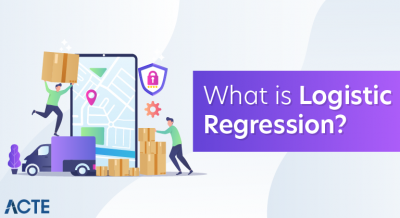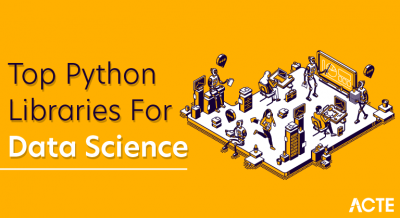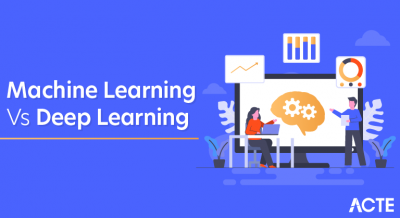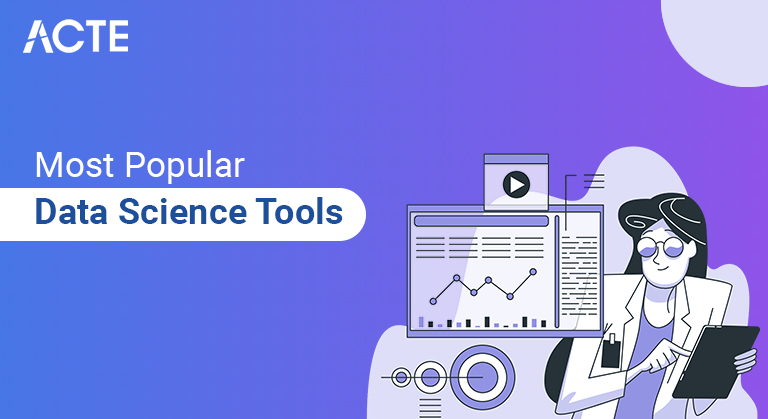
The most used methods are Regression, Clustering, Visualization, Decision Trees/Rules, and Random Forests; Deep Learning is used by only 20% of respondents; we also analyze which methods are most “industrial” and most “academic”.
- Introduction to Data Science tools
- Top Data Science Tools
- Features of Data Science Tools
- Data Science Tools For Data Storage
- Data Science Tools for Exploratory Data Analysis
- Data Science Tools for Data Modeling
- Why Is Data Science Important?
- Role of data scientist
- Benefits of Data Science Tools
- Conclusion
Introduction to Data Science tools:
Data Science emerged as one of the most popular fields of the 21st century. Companies use Data Scientists to help them gain market information and improve their products. Data scientists work as decision makers and have a great responsibility to analyze and manage large amounts of informal and systematic data.
To do that, you need a variety of Data Science editing tools and languages to customize the day. We will go over some of the data science tools used to analyze and make predictions.
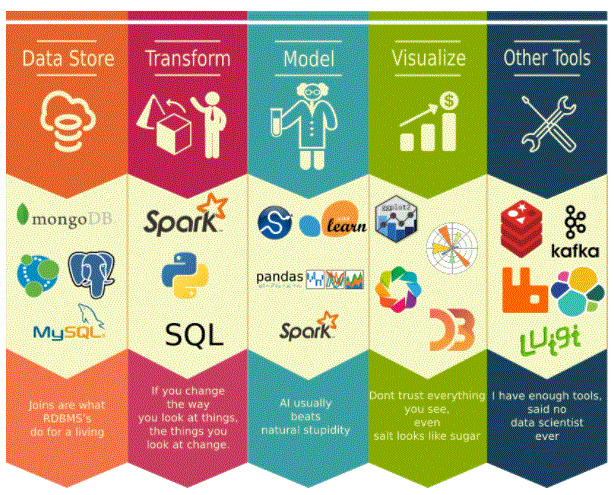
- It is one of those data science tools specially designed for mathematical operations. SAS is a closed source ID software used by large organizations to analyze data. SAS uses the basic SAS language for modeling.
- It is widely used by professionals and companies that work with reliable trading software. SAS provides many mathematical libraries and tools that you as a data scientist can use to model and organize their data.
- Although SAS is very reliable and has strong corporate support, it is very expensive and is only used by large industries. Also, SAS is pale compared to other modern open source tools.
- In addition, there are several SAS libraries and packages that are not available in the base pack and may require expensive upgrades.
- Apache Spark or Spark is just an all-powerful analytics engine and is the most widely used Data Science tool. Spark is specially designed to manage bulk processing and streaming processing.
- It comes with many APIs that help Data Scientists make repetitive access to Data Learning, Storage in SQL, etc. It is better than Hadoop and can do 100 times faster than MapReduce.
- Spark has many Machine Learning APIs that can help Data Scientists make powerful predictions about the data provided.
- Spark performs better than other Big Data Platforms in its ability to manage live streaming data. This means that Spark can process real-time data compared to other analytics tools that process historical data only in batches.
- Spark offers a variety of customized APIs in Python, Java, and R. But Spark’s powerful integration is the language of the Scala program based on Java Virtual Machine and which is a naturally different platform.
- Spark works very well in cluster management which makes it much better than Hadoop as the latter is used for storage only. It is this collection management system that allows Spark to process the application at high speed.
- BigML, is another widely used Data Science Tool. Provides a fully integrated, cloud-based GUI environment that you can use to process Machine Learning Algorithms. BigML provides state-of-the-art software that uses cloud computing for industry needs.
- With it, companies can use machine learning algorithms for all the different parts of their company. For example, it may use all of these software to predict sales, risk analysis, and brand renaming.
- BigML focuses on predictable modeling. It uses various machine learning algorithms such as addition, subtraction, time series prediction, etc.
- BigML provides an easy-to-use web interface using Rest APIs and you can create a free account or premium account based on your data needs. All interactive data display and enables you to send visual charts to your mobile or IoT devices.
- In addition, BigML comes with a variety of automation options that can help you automate hyperparameter modeling and automate reusable workflow.
- Javascript is widely used as a writing language on the client side. D3.js, a Javascript library lets you create interactive visualization for your web browser. With a few D3.js APIs, you can use a few functions to create powerful visibility and analyze data in your browser.
- Another powerful feature of D3.js is the use of animations. D3.js makes documents powerful by allowing updates on the client side and actively using data conversion to reflect visual effects in the browser.
- You can combine this with CSS to create a glowing and transcendent look that will help you use custom graphs on web pages.
- All in all, it can be a very useful tool for Data Scientists working on IoT-based devices that require client interaction to visualize and process data.
- MATLAB is a computerized multi-digit computer system for processing mathematical information. Closed source software that delivers matrix functions, algorithmic usage and mathematical modeling of data. MATLAB is widely used in many fields of science.
- In Data Science, MATLAB is used to mimic sensory and cognitive networks. Using the MATLAB library, you can create powerful visuals. MATLAB is also used for image processing and signal processing.
- This makes it a versatile tool for Data Scientists as they are able to deal with all problems, from data purification and analysis to Advanced Learning algorithms.
- In addition, MATLAB’s easy integration of business applications and embedded systems makes it an ideal Data Science tool.
- It is also useful for performing various tasks automatically from data extraction to text processing for decision-making. However, it suffers from the restriction of having closed source ID software.
- Probably the most widely used data analysis tool. Microsoft has developed Excel primarily for spreadsheets and today, it is widely used in data processing, visualization, and sophisticated calculations.
- Excel is a powerful Data Science analysis tool. Although it was a traditional data analysis tool, Excel still puts a punch.
- Excel comes with various formulas, tables, filters, scanners, etc. You can also create your own custom functions and formulas using Excel. Although Excel is not a compiler of large amounts of data, it is still a good idea to create powerful data visibility with spreadsheets.
- Ggplot2 is an advanced R-format data viewing package. The developers created this tool to replace the traditional R-image package and use powerful commands to create a brilliant look.
- It is the most widely used library of Data Scientists to make observations in analyzed data.Ggplot2 is p.
Top Data Science Tools:
SAS
2. Apache Spark
3. BigML
4. D3.js
5. MATLAB
6. Excel
7. ggplot2
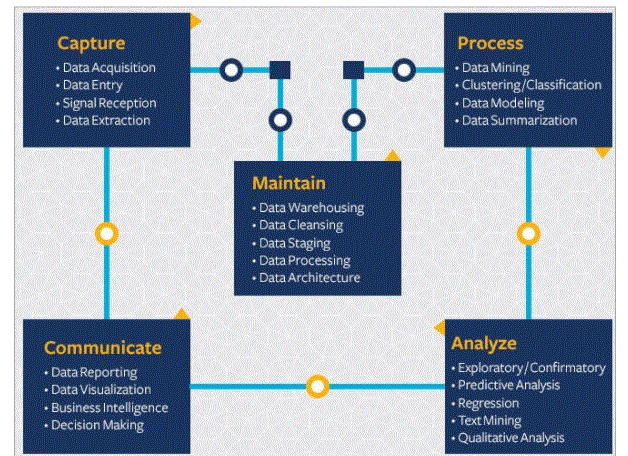
Features of Data Science Tools:
Here we’ll see some options of SAS:
1. Management
2. Report output format
3. encoding algorithmic program
4. SAS Studio
5. Supports differing types of information Formats
6. Contains versatile fourth information piece of writing language
Here we’ll see some options of Apache Spark:
1. Apache Spark has nice speed
2. It additionally has advanced analysis
3. Apache spark additionally has period of time streaming process
4. Dynamic in nature
5. It additionally has Fault Tolerance
Here we’ll see some options of D3.js:
1. supported javaScript
2. It will produce Animated Transition
3. helpful In shopper aspect collaboration on IoT
4. it’s Open supply
5. are often integrated with CSS
6. It’s helpful for creating interactive visuals.
Here we’ll see some aspects of Matlab:
1. it’s helpful for deep learning
2. Provides straightforward integration with embedded system
3. it’s a strong library
4. ready to method advanced mathematical operations
Here we’ll see some options of Excel:
1. Analyzing information on a little scale, it’s modern
2. stand out is additionally used for hard spreadsheets and mental image
3. stand out tool package used for information analysis
4. Provides straightforward reference to SQL
Here we’ll see a number of the options of the Tableau:
1. Tableau will hold mobile device
2. Provides Document API
3. Provides JavaScript API
4. ETL renewal is one among the key options of the Tableau.
Here we’ll see some options of TensorFlow:
1. TensorFlow are often Trained simply
2. It additionally has Future Colum
3. TensorFlow is associate Open supply and versatile supply.
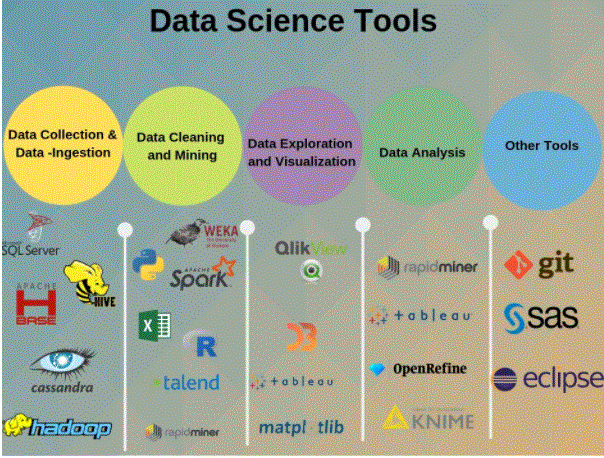
- Successfully live massive knowledge in thousands of Hadoop collections
- It uses the Hadoop Distributed filing system (HDFS) to store knowledge that distributes massive amounts of knowledge across multiple nodes for a distributed, compatible pc.
- It provides practicality to different processing modules, like Hadoop MapReduce, Hadoop YARN, and so on.
- Microsoft HD Insights
- Azure HDInsight may be a cloud platform provided by Microsoft for knowledge storage, processing, and analysis. Businesses like Adobe, Jet, and Milliman use Azure HD Insights to method and manage massive amounts of knowledge.
- Provides full support for integration Apache Hadoop and Spark collections for processing
- Windows Azure Blob is the latest version of Microsoft HD Insights. It will effectively handle the foremost sensitive knowledge in thousands of nodes
- Provides a Microsoft R server that supports business R rating by acting applied math analysis and building strong Machine Learning models.
Data Science Tools For Data Storage:
Apache Hadoop
Apache Hadoop may be a free, open supply framework that may manage and store tons and plenty of knowledge. Provides a distributed pc of huge digital audio tape sets over a collection of one thousand computers. Used for advanced calculation and processing.
Here may be a list of Apache Hadoop features:
Here may be a list of options for Microsoft HD Insights:
- ETL (Extract Transform Load) data collection tool for properties.
- It helps to extract data from various sources, modify it and process it according to the needs of the business and ultimately upload or submit it to the repository.
- Provides distributed processing support, grid computing, adaptive load balancing, dynamic partitioning, and pushdown efficiency.
- One forum for data processing, building Machine Learning and application models.
- Provides support for integrating the Hadoop framework with the built-in RapidMiner Radoop
- Machine learning models are algorithms using a visual flow function designer. It can also generate speculative models using the default model.
Data Science Tools for Exploratory Data Analysis:
Informatica PowerCenter
The turmoil surrounding Informatica is estimated to have reached $ 1.05 billion in revenue. Informatica has many products that focus on data integration. However, the Informatica PowerCenter stands out because of its data integration capabilities.
Here is a list of Informatica PowerCenter features:
RapidMiner
Not surprisingly, RapidMiner is one of the most popular tools for using Data Science. RapidMiner is ranked No. 1 in the Gartner Magic Quadrant for Data Science Platforms 2017, and Forrester Wave for Predictable Analysis and Machine Learning, and one of the top players in the G2 Crowd prediction grid.
Here are some of its features:
- It is built using the most popular programming languages for Data Science, namely, Python and R. This makes it easier to use Machine Learning as most engineers and data scientists are familiar with R and Python.
- It can use most of the machine learning algorithms including standard line models (GLM), segmentation algorithms, Boosting Machine Learning and more. It also
- provides In-depth Reading support.
- Provides support to integrate with Apache Hadoop to process and analyze large amounts of data.
- It supports compatible applications by allowing the use of thousands of servers to perform simultaneous data analysis, data modeling, validation and more.
- Build, test and train Machine Learning models with fast lightning speed. DataRobot examines models of several application scenarios and compares them to see which model offers the most accurate predictions.
- It uses the whole Machine Learning process to a great extent. It makes model testing easier and more efficient using parameter tuning and many other verification methods.
- Data Recovery Science Tools.
- It can be used to connect to multiple data sources, and can visualize large data sets to detect correlation patterns.
- The Tableau Desktop feature lets you create custom reports and dashboards for real-time updates.
- Tableau also provides a site integration functionality that allows you to create calculated fields and join tables, this helps to solve complex data-driven problems.
- Provides clear visibility to create dashboards and detailed reports that bring accurate data.
- Provides data processing, which creates reports and transmits it faster to end users.
- Tableau also provides a site integration functionality that allows you to create calculated fields and join tables, this helps to solve complex data-driven problems.
- Data integration is another important aspect of QlikView. It has copyrighted memory technology that automatically creates relationships and data relationships.
Data Science Tools for Data Modeling:
H2O.ai
H2O.ai is a company that follows open source Machine Learning (ML) products such as H2O, which aims to make ML easier for everyone. With about 130,000 data scientists and about 14,000 organizations, the H20.ai community is growing at a rapid pace. H20.ai is an open source Data Science tool designed to simplify data modeling.
Here are some of its features:
DataRobot
DataRobot is an AI-driven automation platform, which helps to create accurate predictable models. DataRobot makes it easy to use a variety of machine learning algorithms, including merge, split, retrospective models.
Here are some of its features:
Tableau
Tableau is the most widely used data viewing tool in the market. Allows you to separate raw, unformed data into processable and understandable formats. Views created using the Tableau can easily help you understand the interdependence between forecast variables.
Here are a few features of the Tableau:
QlikView
QlikView is another data viewing tool used by more than 24,000 organizations worldwide. It is one of the most effective foraging data analytics for useful business information
Here are a few features of QlikView:
Why Is Data Science Important?
The value of data Science brings together domain expertise from systems, statistics, and statistics to build data and make sense of data. When we consider why data science is becoming increasingly important, the answer lies in the fact that data value is very high. Did you know that Southwest Airlines, at one point, managed to save $ 100 million by using data? They can reduce the idle time of their waiting flights on tarmac and drive change in the use of their resources. In short, today, it is impossible for any business to imagine the world without data.
Data science is much needed and explains how digital data transforms businesses and helps them make smart and critical decisions. Digital data is therefore widely available to people who want to work as data scientists.
Role of data scientist:
Typically, the role of a data scientist involves managing humorous data values and analyzing them using data-driven methods. Once they are able to make sense of the data, they close the business spaces by tapping on the leading information technology teams and understanding the patterns and trends through the display. Data scientists also use Machine Learning and AI, using their programming knowledge around Java, Python, SQL, Big data Hadoop, and data mining. They need to have good communication skills in order to translate their business data acquisition information successfully.
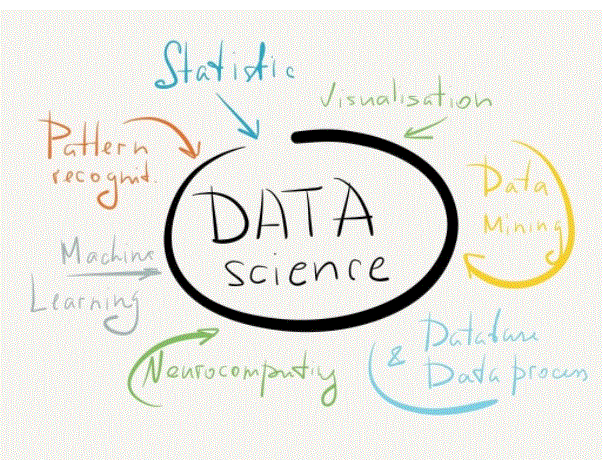
- Data without science is nothing.
- Data needs to be read and analyzed. This calls for the need for data quality and understanding of how to read and perform data-driven discoveries.
- The data will help create a better customer experience.
- In goods and products, data science will use the power of machine learning to enable companies to create and produce products that will appeal to customers. For example, in an eCommerce company, a good promotional program can help them find their customers by looking at their purchase history.
- Data will be applied to all verticals.
- Data science is not limited to consumer goods or technology or health care. There will be a great need to improve business processes using data science from banking and transportation to manufacturing. So anyone who wants to be a data scientist will have a new world of open opportunities there. Future data.
Benefits of Data Science Tools:
Data is important, as is science at coding. Zillions of bits of data are being produced, and now their value has exceeded that of oil. The role of the data scientist is very important and will be very important to many direct organizations across the board.
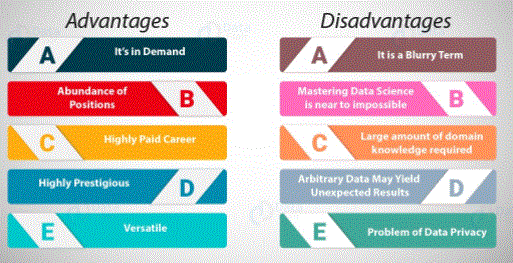
Conclusion:
We can conclude that information science requires a variety of tools. Data science tools are used to analyze information, create aesthetic and collaborative look and create robust guessing models using algorithms. So in this article, we have seen the various tools that are used to analyze Data Science and its features. You can choose the tools according to your needs and the features of the tool.


